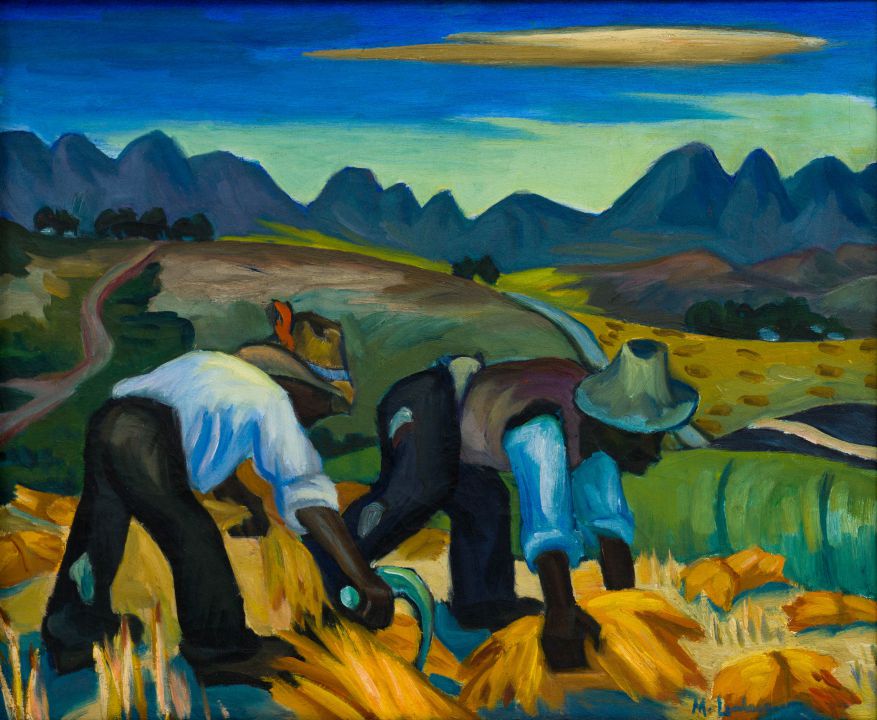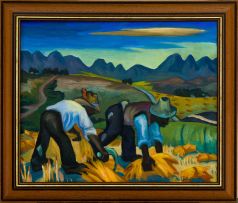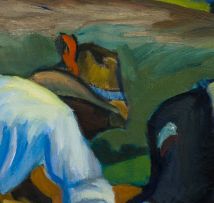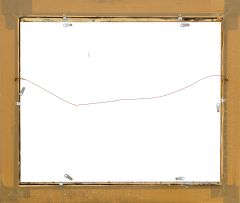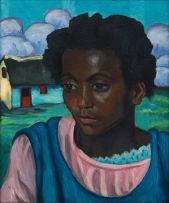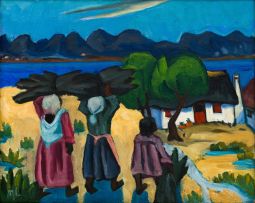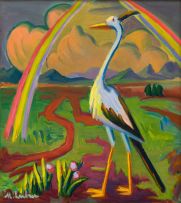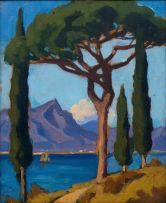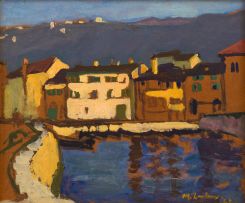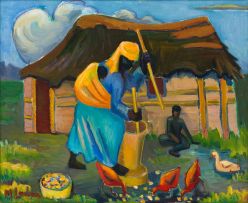Important South African and International Art
Live Auction, 12 November 2018
Evening Sale
Incl. Buyer's Premium & VAT
About this Item
Notes
On the front cover of Maggie Laubser: Her Paintings, Drawings and Graphics (1994), the catalogue raisonné compiled by Dalene Marais, an image of Harvesters in Wheatfield is featured. This image is significant: apart from denoting the meticulous documentation by Marais, it is a seminal piece in Laubser’s oeuvre. It foreshadows the engaging leitmotif of harvesting that preoccupied the artist throughout her artistic production.
Laubser was well-acquainted with labour on a wheat farm. She was born on the farm Bloublommetjieskloof in the Malmesbury district. There she spent her carefree childhood. Later, on a short visit from Europe when she visited her parents, she familiarised herself with the farm Oortmanpost, near Klipheuwel, which her father bought in 1914. Later Oortmanpost became her destination. When she finally returned to South Africa in 1924, she drew inspiration for many a year from the wealth of material she was exposed to. Here she painted her odes to the people, birds and animals of the land.
Even before her return, workers reaping and stacking wheat had already inspired her. In Belgium, at Schoten, where she stayed during 1919 and 1920, she was drawn to the labour of women harvesters. She made drawings and paintings on the theme of peasant women working in wheat fields. When she finally settled in South Africa she used a vacant room outside the farmstead as her studio. Here she started to pay homage to farm labour and many a ground-breaking piece was completed, including Harvesters in Wheatfield. In the present lot, two farm hands are depicted. They work in unison: the one, sickle in hand, cuts the ripe yellow ears of wheat, while his fellow worker gathers the wheat to bundle the sheaves. Stooping, they carry out their work in back-breaking positions. However, the viewer is not aware at first of what their labour really entails and is only enchanted by the beauty of the scene. On looking closer, one becomes aware of the heat of a summer’s mid-day: note the position of their shadows. Nevertheless, the workers cut and gather. In the mid-distance is proof of the labour they have already done.
Harvesting was one of Laubser’s favourite subjects. In these scenes she limited the number of workers employed to carry out the work. Only in one instance do four farm hands appear. Laubser places emphasis on the worth of the sweat of the farm worker’s brow. These harvest scenes belong to the ‘sickle and scythe’ period in the history of South African agriculture. As a matter of interest, Somer, the Afrikaans novel by CM van den Heever deals with the same period of farm labour, but whereas Laubser interprets the labour pictorially, Van den Heever gives a detailed description of the back-breaking labour in the heat of a high summer sun. This is a bygone epoch, of a time before mechanisation took over.
Laubser’s painting additionally has religious connotations. For her, to paint was to pray. The workers in the fields conjure up the following verse from St Matthew: ‘The harvest truly is plenteous, but the labourers few …’.
Elza Miles
Literature
Dalene Marais (1994). Maggie Laubser: Her Paintings, Drawings and Graphics, Johannesburg: Perskor, illustrated in colour on the front cover and in black and white on page 202, catalogue number 634.
Johannes Meintjes (1944). Maggie Laubser, Cape Town: HAUM, illustrated in black and white on page 36 with the caption 'Oestyd (Olieverf) 1929'.
